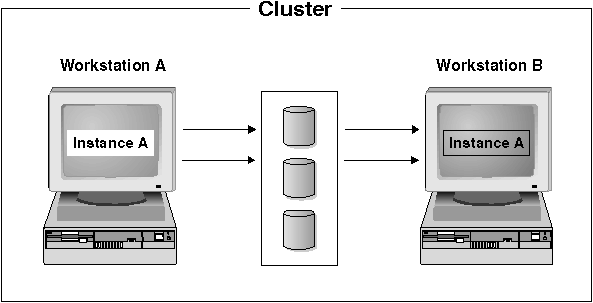

Two types of configuration are available in a DB2 system:
In a hot standby configuration, one machine in the cluster provides dedicated backup support, and a database server runs on the other machine. If the machine participating in the database system fails, the database server on it will be started on the backup machine.
If, in a partitioned database system, you are running multiple logical nodes on a machine and it fails, they will be started on the backup machine.
Figure 83 shows an example of a hot standby configuration.
Figure 83. Hot Standby Configuration
 |
If you are using a hot standby configuration, you can use the failover machine to run applications other than DB2.
In a mutual takeover configuration, both machines may be running a database system (that is, each machine has at least one database server running on it). You would also see this situation with a partitioned database system, in which a database partition server would be running on each machine in the cluster. If one of the machines in the cluster fails, the database server on the failing machine is started to run on the other machine. In a mutual takeover configuration, a database server on one machine can fail independently of the database server on another machine. Any database server can be active on any machine at any given point in time. Figure 84 shows an example of a mutual takeover configuration.
Figure 84. Mutual Takeover Configuration
 |